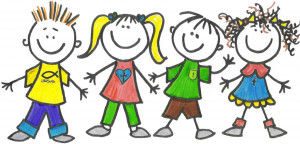
Preschool Children’s Speech and Language Development: 2 to 6 years
Preschool Children’s Speech and Language Development: 2 to 6 years
Preschool Children’s Communication skills are vital to their overall development that lay a foundation for a successful future. Cognition, social interaction, oral-motor development are some of the key factors that influence a child’s communication development. Listening, understanding and using spoken language are the most important components of communication. Developmental milestones outlined below show some of the skills in these areas that mark children’s progress as they learn to communicate. It is also important to note that each child develops at his or her own pace. The following guidelines are intended to give information on general developmental patterns to parents and caregivers.
Read about speech and language development between 1 to 2 years of age here.
2 to 3 Years
- Begin to understand several action words (example, eating, sleeping etc.)
- Understand functional association of words, for example, correctly answers questions such as ‘What do you see with’? ‘What do you eat’? etc.
- Understands simple’ who’, ‘what’ and ‘where’ questions.
- Recognises the names and pictures of most common objects.
- Understands most common adjectives (little doll, big ball)
- By 3 years of age, shows understanding of prepositions such as ‘on’, ‘under’,‘front’, ‘behind’.
- Can listen to and remember simple stories with pictures.
- Understand longer instructions such as ‘make the horse jump’, ‘where are Daddy’s shoes’ etc.
- 2-year-olds usually use 2-word or 3-word sentences.
- Often use personal pronouns correctly (I, me, you, he, she, it).
- 3-year-olds use 4 or 5-word sentences such as ‘I want more milk’ or ‘he took my toy’.
- Asks a lot of questions. They will want to find out the name of things and learn new words.
- Has a vocabulary of approximately 300 words by 3 years of age. They use a wider range of speech sounds. However, many children will shorten longer words such as saying ‘nana’ for ‘banana’ or say ‘pider’ for
‘spider’.
What is acceptable at this age?
- Some children often have difficulty with saying more complex speech sounds such as ‘ch’,‘sh’, ‘z’, ‘r’.
- Most children will shorten longer words, such as saying ‘nana’ for ‘banana’. They may also reduce the complexity of words such as ‘pider’ for ‘Spider’.
- Most children often have difficulty saying more difficult sounds like, ‘sh’, ‘ch’, ‘r’, ‘j’, ‘z’.
- Sometimes they may sound as if they are stammering. This happens because they are trying to share their ideas before their language skills are ready. When you do not understand your child’s speech, ask gently to repeat the utterance. You may say, “Oh, I didn’t quite hear what you said’ Can you tell me again?”.
Red flags
For some children, developing communication skills can be very difficult. It is important that parents seek advice from a speech and language therapist if:
- A child points or shows what they want rather than say it.
- They only say single words instead of joining words together into short sentences.
- They are slow to respond to your instructions.
- They rely on being shown what to do rather than being told.
- You cannot understand most of what they say.
3-4 years
- At 3 years of age, children enjoy listening to people, by 4 years they listen to longer stories and answer questions about a story they have just heard.
- Has a vocabulary of more than 1000 words.
- Can comprehend ‘no’ used to indicate non-existence.
- Points out animals, objects, food from a larger group of pictures.
- Recognizes time in all pictures (morning, day, night) and all major colours.
- Comprehends and uses simple present and present continuous tense forms with feminine and masculine genders. • Comprehend demonstrative nouns, this, that, there.
- Comprehend comparative sentences. • Understand and often use colour, number and time-related words, for example, ‘red’ car, ‘three’ fingers and ‘ yesterday/tomorrow’.
- At 3 years of age, children use 3-word sentences and are non-fluent. By 4 years, they use longer sentences and link them together.
- Ask many questions using the words, ‘why’, ‘where’ and ‘what’.
- Describe events that have already happened.
- Enjoy make-believe play.
- Start to plan games with others.
What is acceptable?
- Most children make mistakes with tense such as say ‘runned’ for ‘ran’ and ‘swimmed’ for ‘swam’.
- Having difficulties with a small number of sounds – for example, r, w, l, f, th, sh, ch and dz.
Red flags
By 3 and a half years old a child should be understood by people outside the family. If not, parents should seek advice from a speech and language therapist. You should be concerned if:
- They are struggling to turn ideas into sentences.
- The language they use is jumbled and difficult to understand.
- They are unresponsive or slow to follow instructions.
4-5 years
- At this stage, children need to listen, understand more and share their ideas within the classroom.
- Understand spoken instructions and simple past and past continuous tenses.
- Understand more complicated language such as, ‘first’, ‘last’, ‘might’, ‘maybe’, ‘above’, ‘in between’.
- Understand words that describe sequences such as, “first, we are going to the park, next we will go to the park”.
- Comprehend opposite concepts, singular/plural contrast for nouns, prepositions ‘at the side of, in between, in front of’.
- Distinguishes between comparative and superlative degrees.
- Uses well-formed 4-5 word sentences.
- Can narrate a story on their own.
- Tends to enact in body posture and gestures what is told in the story.
- Uses simple past and past continuous tenses.
- Choose their own friends and playmates.
- Take turns in much longer conversations.
Read a deailed blog on 1-2 years: Speech and Language Milestones
What is acceptable?
Children at this age use most sounds effectively. However, they may have some difficulties with more difficult words such as ‘scribble’ or ‘elephant’.
Red flags
For some children, developing communication can be a very difficult process and they may need extra help. By 5 years you may see the following:
- Difficulty with abstract ideas such as size or time.
- Difficulty with complex sentences.
- Not having the right words to be able to say what they want.
- Difficulty organising ideas in order.
- Missing out some words. For example, saying ‘playing ball’ instead of ‘Doggy is playing with the ball’.
- Speech that may not follow a logical order.
- Talking about lots of different topics in the same group of sentences.
- Not using the right sounds so that their speech is difficult to understand.
5-6 years
- By 5 or 6 years, children often have good communication skills. They are better at using language in different ways, example discussing ideas or giving opinions.
- Focus on one thing for longer without being reminded.
- Rely less on pictures and objects to learn new words.
- Use their language skills in learning to read, write and spell.
- Learn that the same word can mean two things, such as ‘orange’ the fruit and ‘orange’ the colour.
- Learn that different words can mean the same thing such as ’minus’ and ‘take away’.
- Understand feelings and descriptive words like ‘carefully’, ‘slowly’ or ‘clever’.
- Use language for different purposes such as asking questions or persuading.
- Share and discuss more complex ideas.
- Use language in a range of social situations.
Red flags
A child at this age should have well-developed speech, language and communication skills. If they are finding the language difficult, you might notice that they:
- Find it hard to learn and understand the meanings of words.
- Find it hard to understand language about things in the past or future.
- Struggle to understand phrases that can mean more than one thing, such as “pull your socks up”.
- Respond to just part of an instruction, usually the beginning or end.
- Use short sentences, often with words missing or in the wrong order.
- Find it hard to make up stories. This shows in written work as well as talking.
- Are not learning at school, but nobody can explain why.
- Are struggling to make and keep friends.
Read more about how to facilitate a child’s speech and language skills here.
Use our Speech Doctor app to screen your child for age-appropriate speech and language development.
Subscribe to our blog to receive the latest information on various topics related to speech and language!
- Nonverbal Autism - December 22, 2022
- Spectrum of Hope: The New Normal - April 29, 2018
- Preschool Children’s Speech and Language Development: 2 to 6 years - April 16, 2018


Leave a Comment
(9 Comments)
This is a very useful table to track key development. I have 7 children, some teens now and some still fairly young and have noticed how each child can differ in development.
You are right! Whilst these are general guidelines, each child develops in his/her own ways and pace.
This is really informative, and looks like my little boy is perfectly on track with his words, but he is a proper chatterbox!
Glad, your boy is on track! A lot of chatter matters to them !!
So pleased to have learnt that the stammer is normal! My son still suffers a bit with this now (nearly 5) but like you say he is always in such a rush to get everything said that his little brain hasn’t processed his answer. He talks non stop! 🙂 very useful information for parents of kids starting reception too. X
Yes, they have a lot going on inside and speech is just what we see on the outside !!
This is super helpful, one I’ll be saving to keep coming back and reading. It made me feel happy knowing my boys are well on track.
Thanks Emily, glad it was useful!!
Glad your kids are on track! It helps to know what to expect!
Categories
Recent Posts